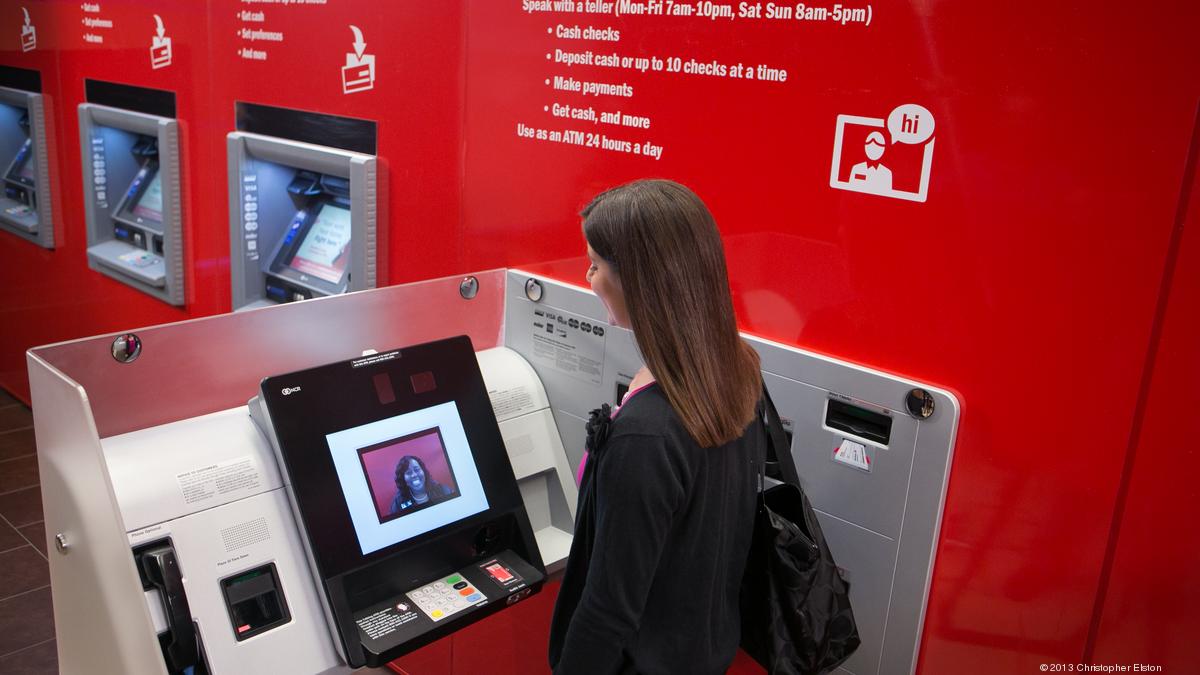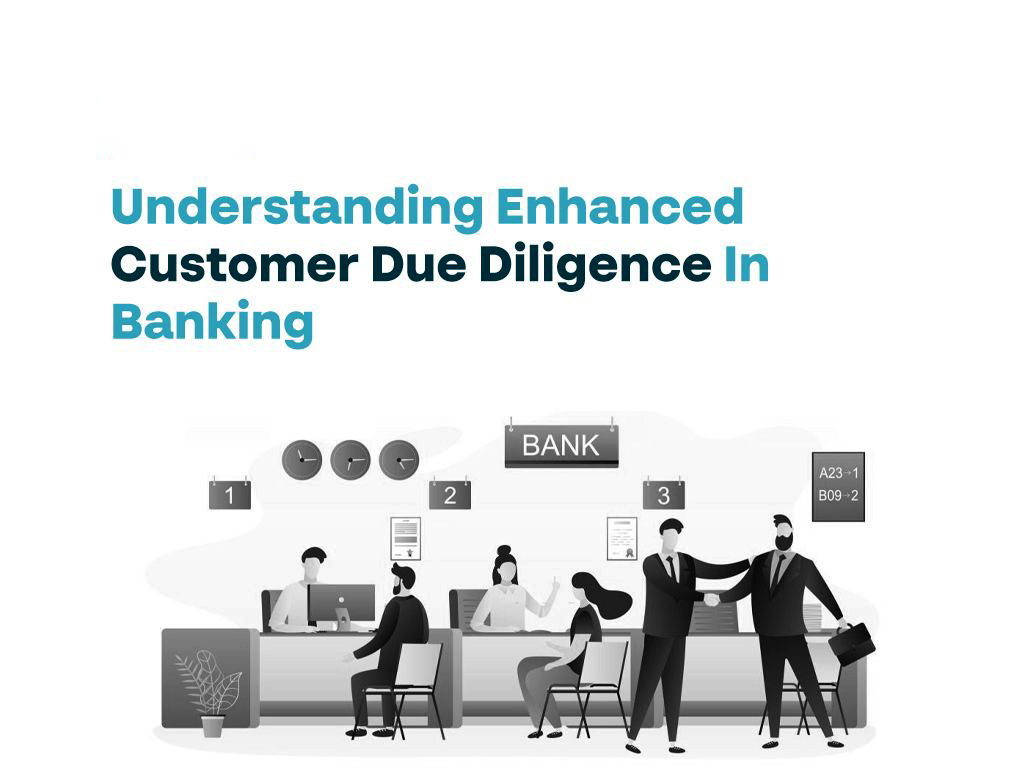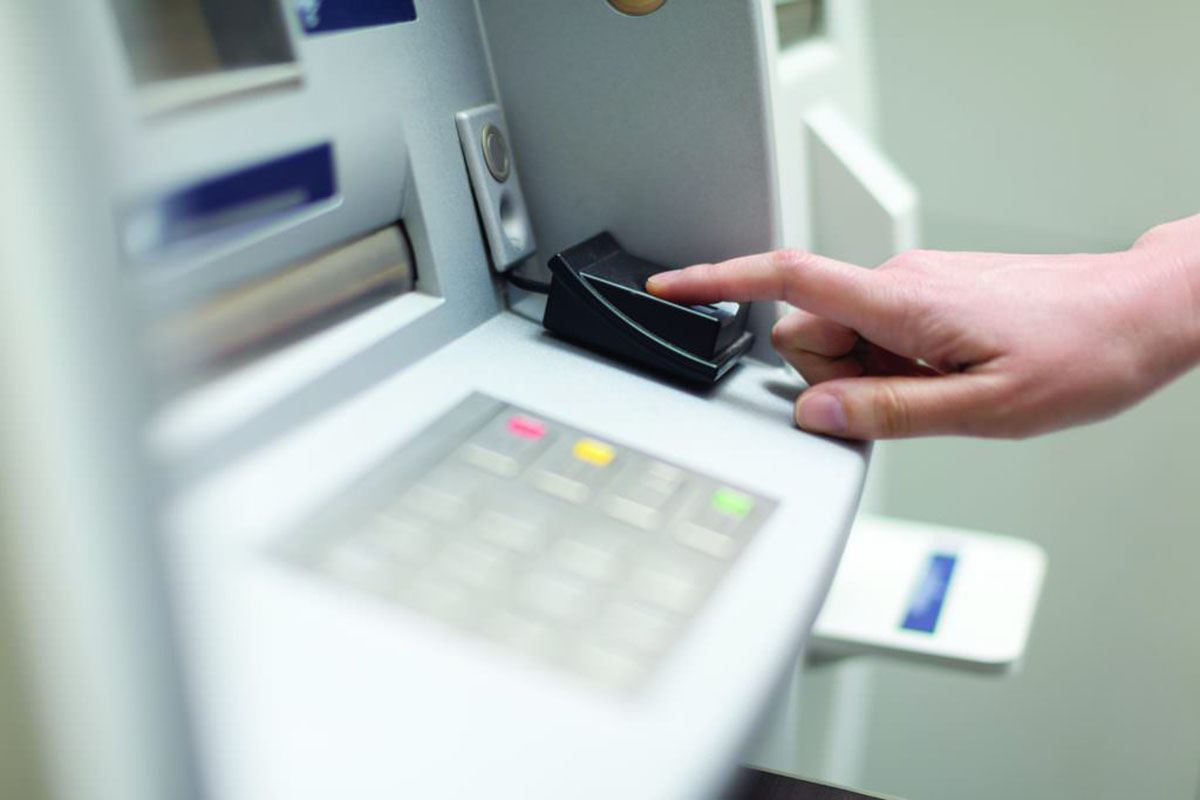

Finance
What Is Safekeeping In Banking
Published: October 13, 2023
Learn about safekeeping in banking and how it contributes to overall financial security. Explore the importance of finance and the role it plays in safeguarding your assets.
(Many of the links in this article redirect to a specific reviewed product. Your purchase of these products through affiliate links helps to generate commission for LiveWell, at no extra cost. Learn more)
Table of Contents
- Introduction
- Definition of Safekeeping in Banking
- Purpose and Importance of Safekeeping
- Services Offered in Safekeeping
- Safekeeping of Documents
- Safekeeping of Money and Assets
- Responsibilities of Banks in Safekeeping
- Types of Accounts for Safekeeping
- Safekeeping of Digital Assets
- Risks and Challenges in Safekeeping
- Regulatory Framework for Safekeeping in Banking
- Conclusion
Introduction
When it comes to the world of finance, safety and security are paramount. This is especially true when it comes to the handling of money, assets, and important documents. In the realm of banking, safekeeping plays a crucial role in ensuring the protection and preservation of these valuable resources.
Safekeeping in banking refers to the practice of securely storing and managing various assets, such as cash, securities, important documents, and digital assets, on behalf of individuals and organizations. Banks offer safekeeping services to their customers to safeguard their valuables from theft, loss, damage, or unauthorized access. By entrusting their assets to a trusted financial institution, individuals and organizations can focus on other aspects of their financial lives, knowing that their valuables are being properly protected.
Safekeeping is not a new concept in the banking industry. It has been an essential service provided by banks for centuries, evolving with the changing times and technological advancements. From the days of physical vaults and lockboxes to the digital age of secure online storage, safekeeping has adapted to meet the needs of clients while maintaining the highest standards of security.
The purpose and importance of safekeeping in banking cannot be overstated. It serves as a crucial link between financial institutions and their clients, providing peace of mind and a sense of trust. Whether it’s safeguarding physical assets or protecting digital information, safekeeping plays a vital role in maintaining financial stability and integrity.
Throughout this article, we will explore the various aspects of safekeeping in banking, including the types of assets and documents that are typically safeguarded, the services offered by banks, the responsibilities of financial institutions in safekeeping, the risks and challenges involved, and the regulatory framework that governs this critical function.
So, join us on this journey into the world of safekeeping in banking, and discover what it takes to ensure the protection and security of your financial resources.
Definition of Safekeeping in Banking
In the realm of banking, safekeeping refers to the process of securely storing and managing various assets on behalf of individuals and organizations. These assets can include cash, securities, important documents, and digital assets. The primary objective of safekeeping is to protect and preserve these valuables against theft, loss, damage, or unauthorized access.
Safekeeping involves more than just storing assets in a physical location. It encompasses a range of practices and protocols aimed at ensuring the security and integrity of the assets throughout the entire storage and handling process. This includes establishing robust security measures, maintaining accurate and up-to-date records, and implementing stringent access controls.
In a banking context, safekeeping typically involves the use of secure vaults, lockboxes, and advanced security systems to safeguard physical assets. For digital assets, safekeeping usually entails the use of encryption technologies, firewalls, and other cybersecurity measures to protect against unauthorized access or cyber threats.
Safekeeping also extends beyond mere storage. Banks have a duty to properly handle and manage the assets under their safekeeping. This may involve activities such as processing dividend payments, collecting interest, or facilitating the transfer of securities. Banks are expected to carry out these tasks with the utmost care, accuracy, and adherence to legal and regulatory requirements.
Ultimately, the goal of safekeeping in banking is to provide individuals and organizations with a secure and trusted environment for the storage and management of their assets. By entrusting their valuables to a reputable financial institution, clients can have confidence in the safety and security of their assets, allowing them to focus on their financial goals and objectives.
Purpose and Importance of Safekeeping
The purpose of safekeeping in banking is to ensure the protection, preservation, and secure management of assets on behalf of individuals and organizations. It serves a crucial role in maintaining trust, stability, and confidence in the financial system. The importance of safekeeping cannot be understated, as it provides numerous benefits and serves various key purposes.
One of the primary purposes of safekeeping is to mitigate the risk of theft and loss. Banks have the expertise, infrastructure, and security measures in place to protect assets from unauthorized access or physical harm. By entrusting their valuables to a bank, individuals and organizations can have peace of mind knowing that their assets are held in a secure and protected environment.
Another important purpose of safekeeping is to ensure the preservation of assets. Financial instruments such as securities or important documents need to be stored in a controlled environment to prevent damage or deterioration. Banks have the necessary facilities and expertise to maintain the integrity and condition of these assets over time. This is particularly crucial for documents with legal or financial implications, as their loss or compromise can have severe consequences.
Safekeeping also plays a role in facilitating efficient and convenient access to assets. By centralizing the storage and management of assets, banks provide individuals and organizations with a single point of contact for all their valuables. This streamlines the process of asset management and allows clients to easily monitor, track, and access their assets whenever needed. Rather than worrying about the logistics of handling and securing their valuables, clients can focus on utilizing their assets to accomplish their financial goals.
Furthermore, safekeeping promotes financial transparency and accountability. Banks are responsible for maintaining accurate records of the assets under their safekeeping. This ensures that clients have a clear understanding of their asset holdings, transactions, and any income or dividends earned. These records serve as crucial documentation for auditing, taxation, or legal purposes, providing a transparent and reliable trail of asset ownership and activity.
In addition to the above purposes, safekeeping also plays a pivotal role in supporting the broader financial system. By securely housing assets, banks contribute to the stability and functioning of capital markets. They provide a trusted infrastructure for the trading, settlement, and custody of financial instruments, which in turn promotes liquidity and market efficiency.
In summary, the purpose and importance of safekeeping in banking encompass the protection, preservation, and efficient management of assets. By safeguarding valuables, promoting transparency, and supporting the overall financial system, safekeeping serves as a crucial component of a trustworthy and reliable banking ecosystem.
Services Offered in Safekeeping
Safekeeping in banking involves a range of services aimed at securely storing and managing various assets on behalf of individuals and organizations. These services are designed to provide clients with convenience, security, and peace of mind when it comes to the protection and management of their valuables. Here are some of the key services offered in safekeeping:
- Secure Storage: Banks offer secure storage facilities, such as vaults and lockboxes, to keep physical assets safe. These facilities are equipped with advanced security systems, including surveillance cameras, access control measures, and alarms, to ensure the highest level of protection.
- Asset Management: In addition to storage, banks provide services for the ongoing management of assets. This includes activities such as processing dividend payments, collecting interest, and facilitating the transfer or sale of securities. Banks have the expertise to handle these tasks accurately and efficiently.
- Account Monitoring: Banks offer account monitoring services to keep clients informed about the status of their assets. This includes providing regular statements, online access to account information, and notifications about any significant changes or transactions related to their holdings.
- Document Safekeeping: Banks can also securely store important documents, such as wills, trusts, deeds, or legal contracts. These documents are kept in controlled environments to protect against loss, damage, or unauthorized access. Clients can have confidence that their critical paperwork is in safe hands.
- Online Safekeeping: With the increasing digitization of financial assets, many banks offer safekeeping services for digital assets as well. This can include safeguarding cryptocurrencies, digital securities, or sensitive financial information. Banks employ advanced encryption technologies and multi-factor authentication to ensure the security of these digital assets.
- Asset Reporting: Banks provide regular asset reporting to clients, detailing the status and value of their holdings. These reports enable clients to stay informed about the performance and growth of their assets, allowing them to make informed financial decisions.
- Customer Support: Banks offer dedicated customer support for safekeeping services. This includes assisting clients with inquiries, providing guidance on asset management, and addressing any concerns or issues that may arise.
These are just a few examples of the services offered in safekeeping. The specific services provided by banks may vary depending on the institution and the type of assets being safeguarded. However, the underlying goal is always to ensure the secure storage and efficient management of assets, providing clients with peace of mind and convenience.
Safekeeping of Documents
Documents play a crucial role in our personal and professional lives, holding valuable information and legal significance. Safekeeping of documents in banking involves the secure storage and management of important papers on behalf of individuals and organizations. Here are some key aspects of safekeeping documents:
Secure Storage: Banks provide secure storage facilities specifically designed to protect important documents. These facilities are equipped with advanced security measures such as surveillance cameras, access control systems, and fire prevention systems to minimize the risk of loss, damage, or unauthorized access.
Protection from Physical Hazards: Safekeeping of documents includes protection from physical hazards such as fire, water damage, or theft. Banks employ industry-standard protocols and infrastructure to safeguard documents from these risks, ensuring their preservation and integrity.
Confidentiality and Privacy: Banks prioritize the confidentiality and privacy of client documents. They have strict processes in place to ensure that only authorized personnel have access to the documents. This includes physical security measures, such as restricted access areas, as well as digital security measures, such as encrypted storage and user authentication.
Indexing and Organization: Safekeeping services often involve indexing and organizing documents for easy retrieval. Banks maintain accurate records and create systems to categorize and locate specific documents as needed. This helps clients access their documents quickly and efficiently when required.
Document Retrieval: Clients can request the retrieval of their documents from safekeeping at any time. Banks have well-defined processes and procedures in place for document retrieval, ensuring that clients receive their requested documents securely and promptly.
Document Destruction: In cases where documents are no longer needed or have reached their retention period, banks often provide document destruction services. This ensures that sensitive information is properly disposed of in a secure and confidential manner, reducing the risk of data breaches or identity theft.
Legal and Compliance Considerations: Banks adhere to legal and regulatory requirements when it comes to safekeeping documents. They maintain compliance with data protection laws and document retention policies, ensuring that client documents are handled in accordance with applicable regulations.
Electronic Document Storage: With the advancement of technology, safekeeping of documents also includes electronic document storage. Banks offer secure online platforms or digital archiving services to store and manage digital copies of important documents. These platforms use encryption and authentication measures to ensure the security and privacy of electronic documents.
Safekeeping of documents in banking provides individuals and organizations with a reliable and secure solution for document storage and management. By entrusting their important papers to a bank’s safekeeping services, clients can have confidence in the protection, confidentiality, and accessibility of their documents, allowing them to focus on their core activities with peace of mind.
Safekeeping of Money and Assets
Safekeeping of money and assets is a fundamental function of the banking industry. It involves the secure storage and management of various financial resources on behalf of individuals and organizations. Here are some key aspects of safekeeping money and assets:
Physical Security: Banks utilize secure vaults, lockboxes, and high-level security systems to protect physical cash and assets. These measures include surveillance cameras, access control, and alarm systems to deter theft and ensure the physical integrity of the stored assets.
Inventory Management: Banks maintain accurate records and conduct regular audits to track and manage the movement of money and assets held in safekeeping. This ensures that all assets are properly accounted for and minimizes the risk of loss or misplacement.
Custodial Services: Banks provide custodial services for a wide range of assets, such as securities, valuables, and precious metals. They act as custodians, holding and safeguarding these assets on behalf of clients, ensuring their security and preservation.
Transaction Execution: In addition to secure storage, banks facilitate the execution of various transactions related to money and assets. This can include processing deposits, withdrawals, transfers, and settlements, ensuring the smooth and efficient movement of funds and assets as required by clients.
Asset Monitoring: Banks offer services to monitor the performance and value of assets held in safekeeping. This includes providing regular reports or statements to clients, updating them on the status and growth of their investments or assets, and enabling them to make informed financial decisions.
Digital Security: With the increasing digitization of financial assets, banks also offer safekeeping services for digital assets, such as cryptocurrencies, digital securities, or virtual currencies. They employ advanced encryption technologies and cybersecurity measures to protect these digital assets from unauthorized access or cyber threats.
Regulatory Compliance: Banks adhere to strict regulatory requirements and industry standards when it comes to safekeeping money and assets. They comply with applicable laws and regulations, ensuring the transparency, security, and accountability of the assets under their custody.
Insurance Coverage: Some banks offer insurance coverage for the money and assets held in safekeeping. This provides an additional layer of protection against unforeseen events, such as theft, natural disasters, or other risks that may result in the loss or damage of the assets.
Safekeeping of money and assets in banking provides individuals and organizations with a reliable and secure solution for the protection and management of their financial resources. By entrusting their money and assets to a trusted financial institution, clients can have confidence that their valuable resources are being properly safeguarded, allowing them to pursue their financial goals with peace of mind.
Responsibilities of Banks in Safekeeping
Banks play a crucial role in the safekeeping of various assets on behalf of individuals and organizations. As custodians, they have a range of responsibilities to ensure the security, integrity, and proper management of the assets entrusted to them. Here are some key responsibilities of banks in safekeeping:
Safe Storage: Banks are responsible for providing secure facilities to store physical assets, such as cash, securities, or valuables. They must have robust infrastructure, including vaults, alarm systems, and surveillance cameras, to protect against theft, loss, or damage.
Strict Access Controls: Banks are responsible for implementing and enforcing strict access controls to their safekeeping facilities. Only authorized personnel should have access to the storage areas, and access should be well-documented and regularly reviewed to minimize the risk of unauthorized access or internal fraud.
Record Keeping: Banks are responsible for maintaining accurate and up-to-date records of the assets held in safekeeping. This includes detailed information about the assets, ownership, transactions, and any income or dividends generated. Proper record keeping is crucial for transparency, audit trail, and regulatory compliance.
Risk Management: Banks have a responsibility to assess and manage the risks associated with safekeeping. This includes implementing effective risk management policies and procedures, such as regular audits, security assessments, and disaster recovery plans, to mitigate potential risks and ensure the continuity of safekeeping services.
Asset Verification: Banks are responsible for verifying the authenticity, legality, and ownership of the assets held in safekeeping. This may include conducting due diligence on the source of funds, verifying ownership documents, or conducting security checks on high-value or sensitive assets.
Client Communication: Banks are responsible for maintaining clear and effective communication channels with their clients regarding their assets held in safekeeping. This includes providing regular updates on the status and performance of the assets, responding to client inquiries and concerns, and facilitating asset-related transactions or instructions as per the client’s request.
Compliance with Regulations: Banks have a responsibility to comply with applicable laws, regulations, and industry standards relating to safekeeping. This includes anti-money laundering (AML) and know-your-customer (KYC) regulations, data protection and privacy laws, and financial reporting requirements. Banks must have robust compliance programs in place to ensure the integrity and legality of their safekeeping services.
Fiduciary Duties: Banks have fiduciary duties towards their clients when it comes to safekeeping. They are legally obligated to act in the best interests of their clients, exercising care, diligence, and loyalty in the management and protection of the assets entrusted to them.
Overall, banks have significant responsibilities in safekeeping, encompassing the physical security of assets, strict access controls, accurate record keeping, effective risk management, and compliance with regulatory requirements. By fulfilling these responsibilities, banks maintain the trust and confidence of their clients, ensuring the safety and proper management of the assets under their custody.
Types of Accounts for Safekeeping
When it comes to safekeeping in banking, there are various types of accounts available to individuals and organizations. These accounts are designed to accommodate different types of assets and cater to the unique needs and preferences of clients. Here are some common types of accounts for safekeeping:
Individual Safekeeping Accounts: These accounts are designed for individuals who wish to safeguard personal assets such as cash, jewelry, important documents, or valuable collectibles. Individual safekeeping accounts offer a secure storage solution, ensuring the protection and preservation of personal belongings.
Corporate Safekeeping Accounts: Corporate safekeeping accounts cater to businesses and organizations, providing a secure place to store important documents, corporate records, intellectual property, or high-value assets. These accounts offer the convenience and peace of mind that comes with entrusting valuable business assets to a trusted financial institution.
Securities Safekeeping Accounts: Securities safekeeping accounts are specifically designed to hold securities such as stocks, bonds, or mutual funds. These accounts provide secure storage, efficient settlement of trades, and accurate record keeping of securities holdings. They enable investors to consolidate their portfolio and ensure the safe custody of their investment assets.
Digital Safekeeping Accounts: With the rise of digital assets, some banks now offer safekeeping services for cryptocurrencies, digital securities, or virtual assets. Digital safekeeping accounts provide secure storage and management of these digital assets, offering peace of mind to investors who require a trusted custodian for their digital holdings.
Trust Safekeeping Accounts: Trust safekeeping accounts are established within a trust structure. They are commonly used for estate planning purposes, where assets are held in safekeeping by a designated trustee on behalf of beneficiaries. Trust accounts ensure the proper administration and protection of assets according to the terms of the trust agreement.
Foreign Currency Safekeeping Accounts: These accounts are designed to hold foreign currencies securely. They provide a safe and convenient solution for individuals or businesses that handle multiple currencies and wish to protect against currency fluctuations or geopolitical risks. Foreign currency safekeeping accounts offer the ability to hold foreign cash or maintain foreign currency-denominated bank accounts.
Custodial Accounts: Custodial accounts are established for the safekeeping of assets on behalf of minors or individuals who are unable to manage their own financial affairs. These accounts are often set up within a legal framework and are managed by a designated custodian, such as a parent, guardian, or trustee. The custodian is responsible for the safekeeping and proper management of the assets held in the account.
The availability and specific features of these accounts may vary among different banks and financial institutions. It is important for individuals and organizations to assess their unique needs and requirements when selecting the type of account for safekeeping. By choosing the appropriate account, clients can ensure the security, protection, and efficient management of their assets under the care of a trusted financial institution.
Safekeeping of Digital Assets
In the modern digital age, the concept of safekeeping extends beyond physical documents and cash. With the rise of cryptocurrencies, digital securities, and virtual assets, the safekeeping of digital assets has become increasingly important. Safekeeping of digital assets involves the secure storage and management of these intangible resources, offering protection against loss, theft, or unauthorized access. Here are some key considerations for the safekeeping of digital assets:
Secure Digital Wallets: Digital assets are typically stored in digital wallets, which can be software-based or hardware devices specifically designed for secure storage. These wallets utilize robust encryption algorithms and multi-factor authentication to protect the private keys required to access and control the digital assets.
Cybersecurity Measures: Banks and financial institutions that offer safekeeping of digital assets invest in advanced cybersecurity measures to safeguard against cyber threats. This includes firewalls, intrusion detection systems, secure internet connections, and regular vulnerability assessments to protect the digital assets from hacking attempts or unauthorized access.
Cold Storage Solutions: Cold storage refers to the practice of storing digital assets offline, away from internet connectivity, to minimize the risk of cyberattacks. This can involve using hardware wallets or other offline storage devices to keep the private keys and digital assets physically isolated from online threats.
Multi-Signature Technology: Multi-signature technology is commonly used in the safekeeping of digital assets. This security feature requires multiple authorized parties to approve a transaction, providing an extra layer of protection against unauthorized access or fraud.
Audit Trail: Safekeeping of digital assets involves maintaining a detailed audit trail of transactions and movements of the assets. This allows for transparency, accountability, and the ability to trace any unauthorized activities or suspicious transactions related to the digital assets.
Insurance Coverage: Some banks and financial institutions offer insurance coverage for digital assets held in safekeeping. This provides an additional layer of protection against events such as hacks, loss, or theft of the assets. Clients should check with their chosen institution to understand the extent and limitations of the coverage provided.
Regulatory Compliance: Banks that offer safekeeping of digital assets must comply with relevant regulatory requirements. This includes anti-money laundering (AML) and know-your-customer (KYC) regulations to prevent illicit activities and ensure the legitimacy of the digital assets being held.
User-Friendly Interfaces: To facilitate the safekeeping of digital assets, banks often provide user-friendly interfaces and platforms that allow clients to easily monitor and manage their assets. These interfaces may include detailed asset balance information, transaction history, and tools to securely transfer or trade the digital assets.
Safekeeping of digital assets is a rapidly evolving field, with new technologies and security measures continuously being developed. Banks, financial institutions, and individuals must stay vigilant and adapt to emerging threats and technologies to ensure the secure storage and management of digital assets.
Risks and Challenges in Safekeeping
While safekeeping in banking provides a reliable solution for the protection and management of assets, it is not without its risks and challenges. It is essential to be aware of these potential pitfalls to ensure appropriate safeguarding measures are in place. Here are some common risks and challenges in safekeeping:
Security Breaches: One of the major risks in safekeeping is the potential for security breaches. This can include unauthorized access to physical storage facilities, cyber-attacks targeting digital assets, or internal fraud. Banks must implement robust security measures, including physical security protocols, cybersecurity systems, and employee vigilance, to minimize these risks.
Operational Errors: Human error can pose challenges in safekeeping. Mistakes in documentation, transaction processing, or asset tracking can lead to errors or discrepancies. Banks need to have stringent operational controls and effective training programs in place to mitigate the risk of operational errors.
Legal and Compliance Risks: Safekeeping involves adherence to various legal and regulatory requirements. Failure to comply with these regulations can result in legal consequences and reputational damage. Banks must stay updated on regulatory changes, maintain robust compliance programs, and conduct regular audits to mitigate legal and compliance risks.
Technological Vulnerabilities: Safekeeping of digital assets is prone to technological vulnerabilities, including software vulnerabilities, malware attacks, or hardware failures. Banks need to invest in sophisticated cybersecurity systems, regularly update their technology infrastructure, and establish backup and recovery mechanisms to address these vulnerabilities.
Market and Economic Risks: The safekeeping of certain assets, such as securities or commodities, is subject to market and economic fluctuations. Changes in market conditions, geopolitical events, or economic downturns can impact the value and liquidity of these assets. Banks must have risk management strategies in place to safeguard against these market and economic risks.
Emerging Technologies: The rapid advancement of technology brings both opportunities and challenges in safekeeping. New technologies, such as blockchain or digital identity systems, may disrupt traditional safekeeping practices. Banks need to stay informed about emerging technologies, adapt their processes accordingly, and ensure a seamless transition to new methods of safekeeping.
Custodian Risk: Custodian risk refers to the potential failure or insolvency of the institution holding the assets in safekeeping. While banks are typically highly regulated and have robust risk management processes, there is still a small inherent risk of custodian failure. Diversification of custodians or the use of independent custodial organizations can mitigate this risk.
Data Breaches and Privacy: Safekeeping involves the storage of sensitive client information, including personal and financial data. The risk of data breaches and privacy breaches is ever-present. Banks must invest in secure data storage and transmission methods, encrypt client data, and adhere to privacy regulations to protect client information from unauthorized access or misuse.
Awareness of these risks and challenges is crucial for banks, financial institutions, and clients alike. By understanding and proactively addressing these potential pitfalls, safekeeping can continue to be a reliable and secure practice for the protection and management of valuable assets.
Regulatory Framework for Safekeeping in Banking
The safekeeping of assets in banking operates within a regulatory framework designed to ensure the security, integrity, and accountability of the safekeeping process. This framework consists of legal and regulatory requirements that banks must adhere to when providing safekeeping services. Here are some key aspects of the regulatory framework for safekeeping in banking:
Legislation and Jurisdiction: Each country or jurisdiction has specific legislation that governs safekeeping in banking. These laws outline the rights and responsibilities of banks and clients, the requirements for secure storage facilities, privacy and data protection obligations, and other relevant aspects of safekeeping.
Anti-Money Laundering (AML) and Know Your Customer (KYC) Regulations: Banks offering safekeeping services must comply with AML and KYC regulations. They are required to perform due diligence on clients to verify their identity, assess money laundering risks, and monitor transactions for suspicious activities. By doing so, banks contribute to preventing illicit funds from entering the financial system.
Consumer Protection Laws: Safekeeping services are subject to consumer protection laws, which aim to safeguard the rights and interests of clients. These laws govern the disclosure of information, fair practices, and dispute resolution mechanisms, ensuring that clients are treated fairly and have avenues for recourse in case of any issues or disputes related to safekeeping.
Securities Regulations: When it comes to safekeeping securities, banks must comply with securities regulations. These regulations require proper custody and handling of securities, the accurate reporting of holdings and transactions, and adherence to trading and settlement rules. Banks offering custodial services for securities need to meet stringent regulatory requirements to ensure investor protection and market integrity.
Data Protection and Privacy Laws: Banks are required to comply with data protection and privacy laws to safeguard client information. These laws govern the storage, transmission, and access to personal and financial data. Banks are obligated to implement robust security measures, obtain client consent for data processing, and adhere to strict standards when storing and handling client information.
International Standards and Guidelines: In addition to local regulations, there are international standards and guidelines that banks may adhere to when providing safekeeping services. These include standards set by international bodies such as the International Organization of Securities Commissions (IOSCO), the Financial Action Task Force (FATF), and the International Standards Organization (ISO). Banks may voluntarily adopt these standards to ensure best practices and align with global requirements.
Regulatory Oversight: Regulatory agencies, such as central banks, financial regulators, or securities commissions, provide oversight and supervision of safekeeping activities. They monitor banks’ compliance with regulations, conduct inspections and audits, and enforce penalties or sanctions for non-compliance. This regulatory oversight helps to maintain the integrity, transparency, and stability of the safekeeping ecosystem.
Given the critical nature of safekeeping in banking, the regulatory framework ensures that banks operate in a secure, transparent, and accountable manner when safeguarding clients’ assets. Compliance with these regulations allows for client protection, market integrity, and the overall confidence and stability of the financial system.
Conclusion
The safekeeping of assets in banking plays a crucial role in ensuring the protection, preservation, and secure management of valuable resources. Whether it is physical cash, important documents, securities, or digital assets, safekeeping services offer individuals and organizations a trusted solution for safeguarding their financial resources.
In this article, we have explored various aspects of safekeeping in banking, including its definition, purpose, and importance. We have discussed the range of services offered by banks, such as secure storage, asset management, and monitoring. Additionally, we have examined the safekeeping of documents and money, as well as the growing importance of safekeeping digital assets in the digital age.
We have also highlighted the responsibilities of banks in safekeeping, including the need for secure storage, strict access controls, accurate record keeping, and compliance with legal and regulatory requirements. Recognizing the risks and challenges, such as security breaches, operational errors, and technological vulnerabilities, is essential for maintaining the integrity and security of safekeeping practices.
Furthermore, we have discussed the regulatory framework surrounding safekeeping in banking, which involves legislation, AML and KYC regulations, consumer protection laws, securities regulations, data protection and privacy laws, as well as international standards and guidelines. Compliance with these regulations ensures the transparency, accountability, and stability of the safekeeping process.
As technology continues to advance, safekeeping in banking will continue to evolve. Banks must consistently adapt to new technologies, cybersecurity threats, and regulatory changes to meet the evolving needs and expectations of clients. By doing so, they can continue to provide secure and reliable safekeeping services that instill confidence and trust among their clients.
In conclusion, safekeeping is a fundamental function of the banking industry, offering individuals and organizations a secure and trustworthy solution for protecting their valuable assets. Through stringent security measures, robust operational processes, and adherence to regulatory requirements, banks ensure the safety, integrity, and proper management of assets under their care. Safekeeping in banking serves as a cornerstone for financial stability, transparency, and customer confidence in the increasingly complex and interconnected world of finance.














